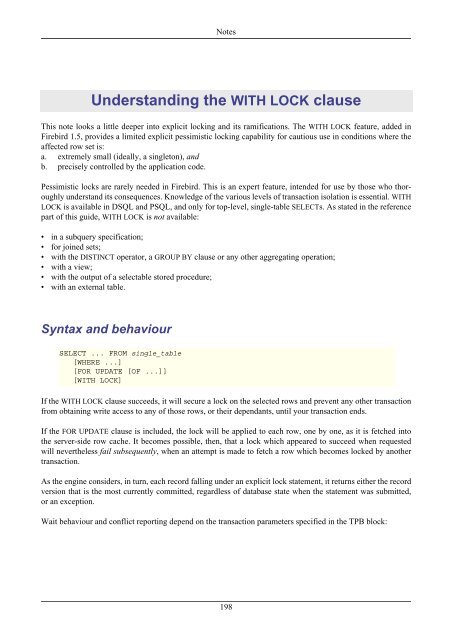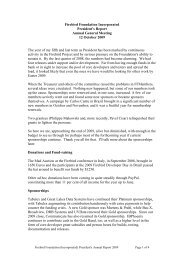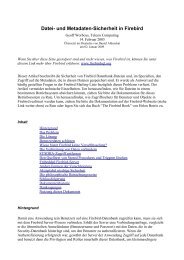Firebird 2.1 Language Reference Update
Firebird 2.1 Language Reference Update
Firebird 2.1 Language Reference Update
You also want an ePaper? Increase the reach of your titles
YUMPU automatically turns print PDFs into web optimized ePapers that Google loves.
Notes<br />
Understanding the WITH LOCK clause<br />
This note looks a little deeper into explicit locking and its ramifications. The WITH LOCK feature, added in<br />
<strong>Firebird</strong> 1.5, provides a limited explicit pessimistic locking capability for cautious use in conditions where the<br />
affected row set is:<br />
a. extremely small (ideally, a singleton), and<br />
b. precisely controlled by the application code.<br />
Pessimistic locks are rarely needed in <strong>Firebird</strong>. This is an expert feature, intended for use by those who thoroughly<br />
understand its consequences. Knowledge of the various levels of transaction isolation is essential. WITH<br />
LOCK is available in DSQL and PSQL, and only for top-level, single-table SELECTs. As stated in the reference<br />
part of this guide, WITH LOCK is not available:<br />
• in a subquery specification;<br />
• for joined sets;<br />
• with the DISTINCT operator, a GROUP BY clause or any other aggregating operation;<br />
• with a view;<br />
• with the output of a selectable stored procedure;<br />
• with an external table.<br />
Syntax and behaviour<br />
SELECT ... FROM single_table<br />
[WHERE ...]<br />
[FOR UPDATE [OF ...]]<br />
[WITH LOCK]<br />
If the WITH LOCK clause succeeds, it will secure a lock on the selected rows and prevent any other transaction<br />
from obtaining write access to any of those rows, or their dependants, until your transaction ends.<br />
If the FOR UPDATE clause is included, the lock will be applied to each row, one by one, as it is fetched into<br />
the server-side row cache. It becomes possible, then, that a lock which appeared to succeed when requested<br />
will nevertheless fail subsequently, when an attempt is made to fetch a row which becomes locked by another<br />
transaction.<br />
As the engine considers, in turn, each record falling under an explicit lock statement, it returns either the record<br />
version that is the most currently committed, regardless of database state when the statement was submitted,<br />
or an exception.<br />
Wait behaviour and conflict reporting depend on the transaction parameters specified in the TPB block:<br />
198

















